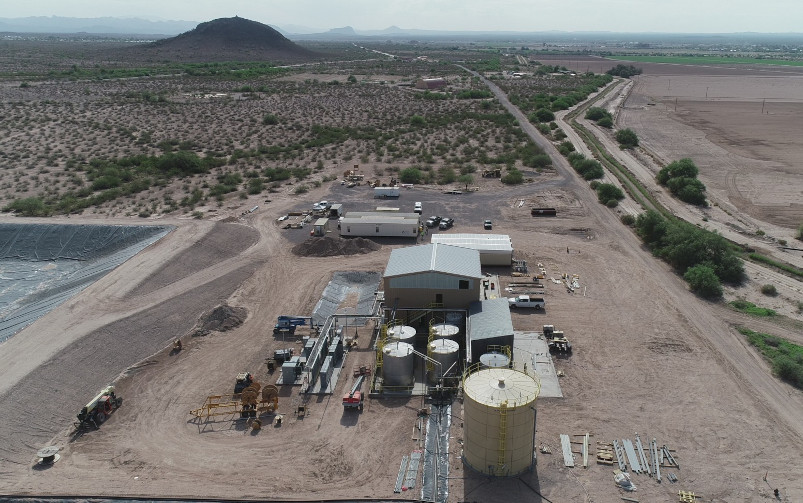Osisko Mining will be proceeding with the development of the Windfall gold project solo after negotiations with Northern Star Resources ended. Courtesy of Osisko Mining.
Welcome back to your weekly mining news recap, where we catch you up on some of the news you may have missed. This week’s headlines include the Kipushi zinc mine’s planned return to production, Osisko Mining tackling the Windfall gold project solo and investment in a shuttered Sudbury nickel mine.
Glencore may have to rethink its plans to expand the McArthur River zinc mine after the Northern Territory government in Australia found it did not adequately consult Aboriginal custodians, reported BNN Bloomberg. The company claims that it came to an agreement with Indigenous stakeholders in 2017. However, the government ruled that the company must consult with all custodians before it commences any expansion of a sacred site.
Doug Ford held a press conference at ArcelorMittal Dofasco, a steel company based in Hamilton, Ont., where he announced that the government of Ontario will invest $500 million to support the electrification of the steelmaking process. The project has an estimated cost of $1.8 billion, and the province’s announcement follows a $400 million investment by the federal government in the project last July.
Ivanhoe Mines and Gécamines announced that they are bringing the Kipushi mine back to production after years of maintenance. The mine has been under maintenance since 1993. Now that it will be returning to production, Ivanhoe says Kipushi will be one of the highest-grade zinc mines in the world.
Tahltan Nation Development Corporation has entered a distribution agreement to resell Sandvik mining equipment to northwestern British Columbia and Yukon. Over the past several years, mining in these regions has seen a lot of development and, according to TNDC, the corporation will be focused on ensuring sustainable economic activity in the area.
Teck Resources is one step closer to its goal of reducing by a third the carbon intensity of its operations by 2030 with the announcement of a pilot project for a fully electric transport truck. Working with MEDATech, the trial is expected to begin in summer 2022 and is believed to be the first use of a battery-electric truck to haul copper concentrate worldwide.
As the Odyssey mine in northern Quebec undergoes construction, a fleet of MacLean battery electric vehicles will be used to support installation and maintenance. The announcement holds special significance for Don MacLean, the founder of MacLean Engineering, who grew up in Malartic where his father managed the mine from the late 1930s to 1940s.
In early February, Magna Mining Company and Mitsui, a Japan-based company, announced that they entered a non-binding memorandum of understanding which could lead to the reopening of the Shakespeare nickel mine near Espanola, Ont., as reported by CBC. With the investment from Mitsui, a spokesperson from Magna said construction could possibly start in 2022, though new investment will be needed as construction could cost as much as $230 million.
After a dispute between Iamgold and major shareholder Resource Capital Fund (RCF), Iamgold has announced changes to its board of directors. Per RCF’s demands, Maryse Bélanger will take her seat as chair and David Smith will be added to the board. Lawrence Haber’s nomination, which was a point of contention between the two companies, has been replaced by Ian Ashby.
After discussions of developing the Windfall gold project with Northern Star Resources fell through, Osisko Mining has decided to move forward independently, reported Mining.com. According to Osisko, proceeding with the project alone is the best option for the company and they will continue to maintain a beneficial relationship with Northern Star.
In 1923, steelworkers at the Sydney plant in Cape Breton, Nova Scotia, went on strike, demanding fairer wages and better conditions. When the protest ended in police violence, local unions disbanded, and workers returned to the plant. They wouldn’t see their demands met for another two years when the United Mine Workers of America mounted another protest that would eventually be commemorated as the provincial holiday known as Davis Day or Miners’ Memorial Day.
Ian Pearce will assume the role of Incoming President-Elect from 2024 to 2025 at the Canadian Institution of Mining, Metallurgy and Petroleum. Pearce has more than 35 years of experience in the mining industry and has held high-level positions at Fluor Inc., Falconbridge Limited and Xstrata Nickel. Starting in May 2024, he will provide direction to CIM and ensure its position as a leader in the Canadian mining sector.
Mining companies are releasing their fourth quarter reports and here are some of the highlights:
First Quantum produced 74,945 ounces of gold and 201,823 tonnes of copper at an all-in sustaining cost (AISC) of US$2.05 per pound of copper. The company also reported net earnings of US$247 million.
Barrick produced 1.2 million ounces of gold at an AISC of US$971 per ounce in Q4 and net earnings of US$726 million.
Kinross produced 487,621 ounces gold at an AISC of US$1,312 per ounce and reported adjusted net earnings of US$101.8 million.
Yamana Gold produced 240,718 ounces of gold and 3,142,781 ounces of silver at an AISC of US$962 per gold equivalent ounce (GEO). It also reported net earnings of US$109.7 million.
Glencore produced 300,200 tonnes of copper, 262,000 tonnes of zinc and 31,200 tonnes of nickel in the last quarter of 2021. The company did not report Q4 net earnings but in the full year 2021 earned net earnings of US$4.974 billion.
That’s all for this week. If you’ve got feedback, you can always reach us at editor@cim.org. If you’ve got something to add, why not join the conversation on our Facebook, Twitter, LinkedIn or Instagram pages?




